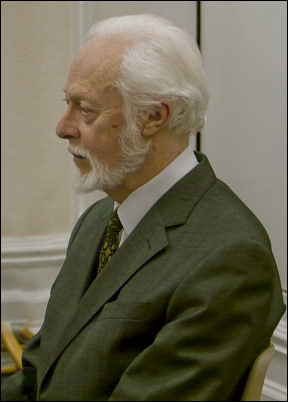|
A near capacity
attendance welcomed David for his talk. He began by saying what
the important questions for historians were, such as how, what
and how. The question that really mattered for historians, David
said, was why. It was this rhetorical question that David asked
several times during his talk on the lost farms of Brinscall
Moors.
Why, indeed, are the moors called Brinscall Moors? No map names
them as such, however, everyone around the area calls them so.
Up until about 1830 Brinscall was a tiny settlement, like
Ollerton is now, and had not been a civic parish since the 14th
century. Actually, the parishes of Wheelton, Withnell and Heapey
cover the moors.
Why were the
farms built there, occupied then flourished? In fact, around 50
farms were built on the moors in an area no bigger than 5 square
miles. All were built between 1680 and 1740 and all built to a
standard pattern of design. Money was the answer. Landowners,
such as the Hoghton family, sought to capitalise on the wide
open moor land by farming sheep for meat and fleece.
The late 18th C
and early 19th C saw some farms being enlarged and even some new
ones built. Information from the 1851 census highlighted many
farms containing large families. Calico Farm, for example, had 9
children recorded there. Families were involved in activities to
earn extra money to the farming, such as handloom weaving and
working in local quarries. |

David Clayton |
|
By the 1891
census though a complete change had taken place in the
population of the moors. Why this change? By the late 19th C
many people found employment in the local textile mills, bleach
works and print works, including many people on Brinscall Moors.
Impact was such that farms began to be abandoned, those in the
middle of the moors were first, then those around the edges.
Brinscall, helped by the arrival of the railway in 1869, had
become an industrial village.
Early 20th C saw most farms being abandoned and demolished. Why?
Liverpool Corporation had built reservoirs around the edges of
the moors to provide water to the city’s population. There were
outbreaks of cholera elsewhere due to polluted drinking water.
To ensure Liverpool’s drinking water was safe the corporation
compulsorily purchased farm and banned the keeping of livestock
rendering them not economically viable.
Only 10 examples of this particular type of farm survive today.
Six as domestic country houses and 4 others actually still
working farms.
David, then, explained in just over 1 hour why the rise and
decline of these farms on Brinscall Moors took place in a small
area over a relatively short period of time.
Peter Robinson |